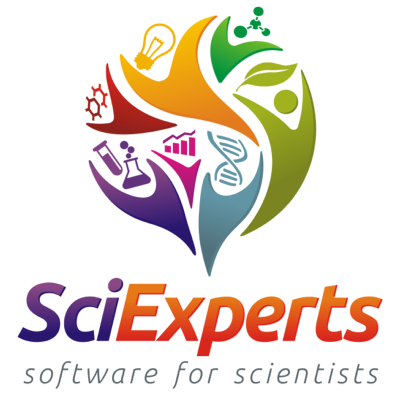Tables

Customize your tables of
- Summary statistics
- Results from hypothesis tests
- Regression results
- LR and Wald tests, GOF statistics, …
- Results from any Stata command
Export to
- Word, Excel
- LaTeX
- HTML, Markdown
- and more
Bayesian econometrics
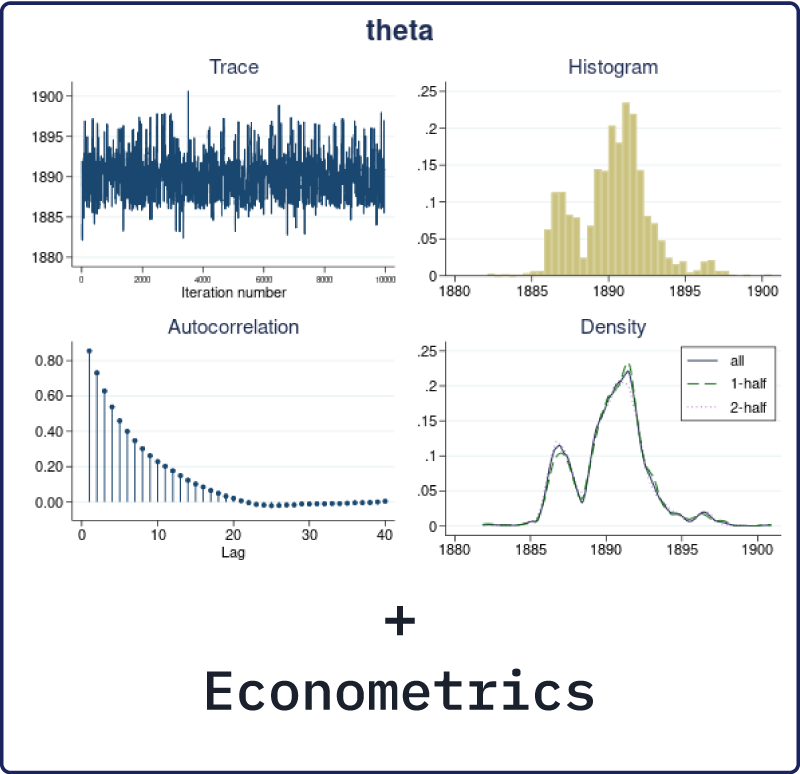
Bayesian
- VAR models
- IRF and FEVD analysis
- Dynamic forecasting
- Panel/longitudinal-data models
- Linear and nonlinear DSGE models
PyStata—Python and Stata
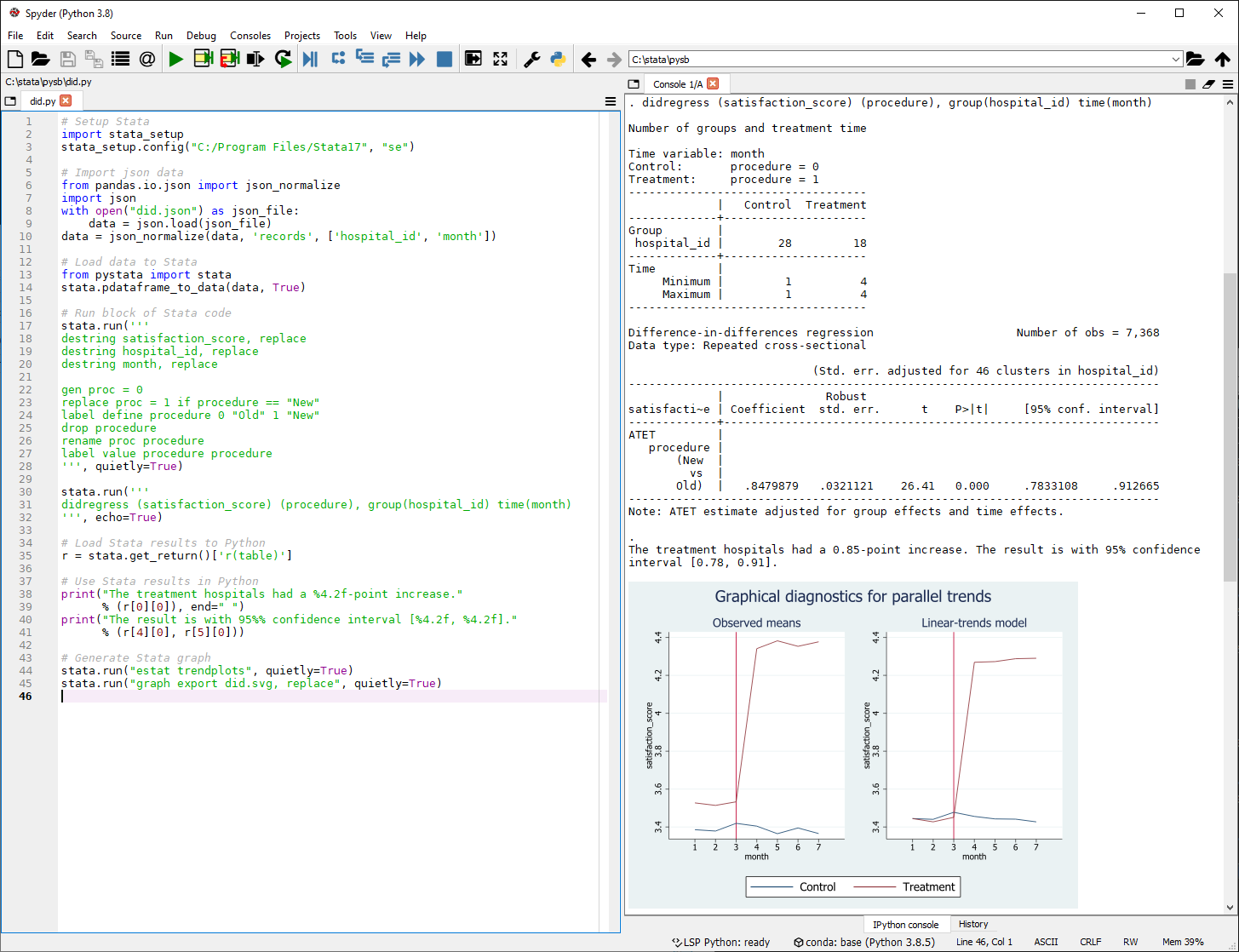
- Call Python from Stata.
- Call Stata from Python.
- Exchange data, metadata, and results seamlessly.
- Use Stata from Jupyter Notebook, Spyder, PyCharm IDE, and more.
Jupyter Notebook with Stata
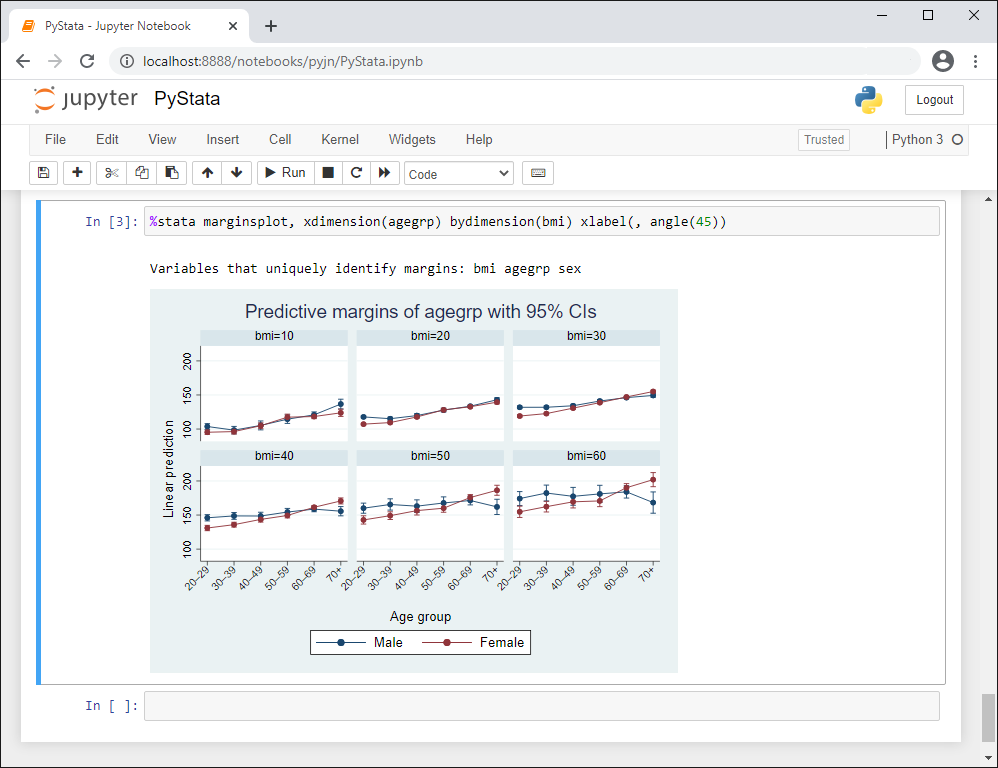
- Invoke Stata and Mata from Jupyter Notebook.
- Easily reproduce your work and collaborate with others.
- Access results from Stata analyses within Python.
- Stata output, graphs, and tables seamlessly integrate with your Jupyter Notebook.
Difference-in-differences (DID) and DDD models
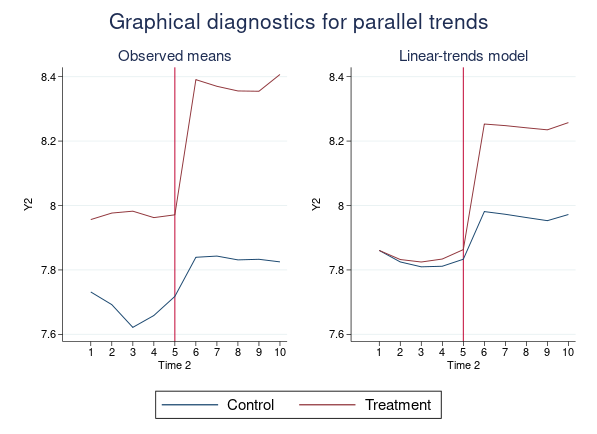
- Evaluate the effect of a policy, a treatment, or an intervention.
- Control for confounding unobserved group and time characteristics.
- Use panel data or repeated cross-sections.
- Use DID. In vogue since 1855.
Faster Stata
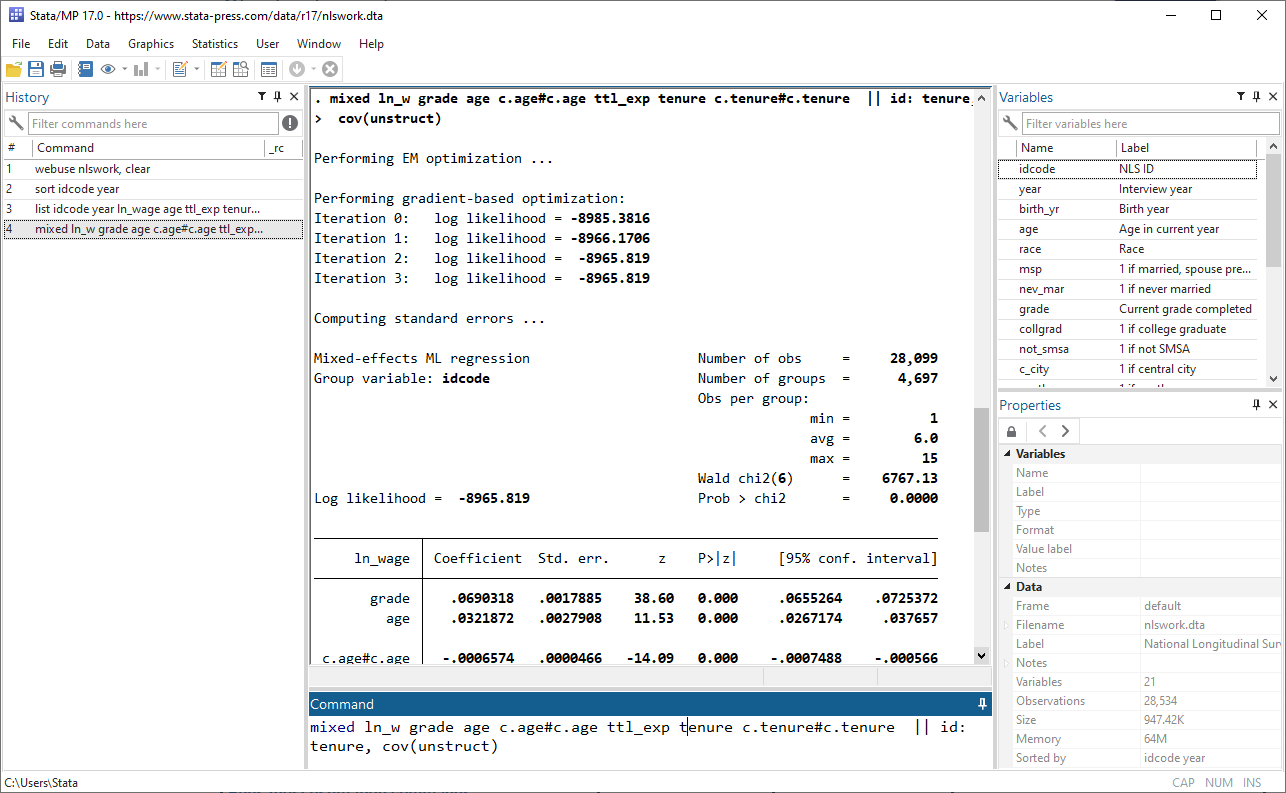
Stata is fast, and keeps getting faster.
- Faster sort and collapse
- Faster mixed models
- Faster estimation commands
- Faster import delimited
- And more
Interval-censored Cox model
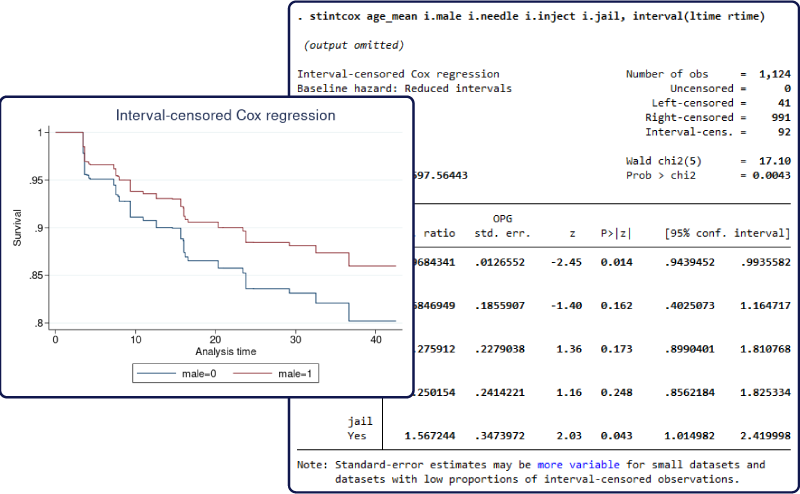
You want to model time to an event.
But you don’t know the exact event times—only the intervals in which events happen.
And you don’t want to make parametric assumptions.
Try an interval-censored Cox model.
Multivariate meta-analysis
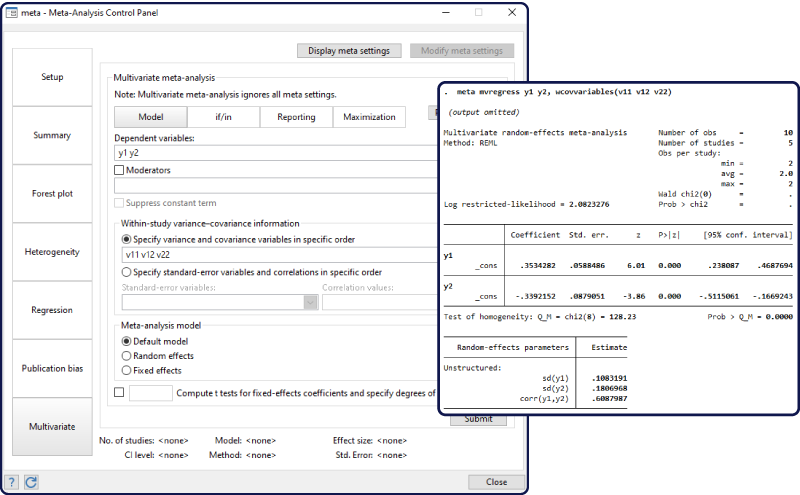
Do you have multiple effect sizes?
Do they share a common control group?
Do they share the same group of subjects?
Multivariate meta-analysis can help.
Bayesian VAR models
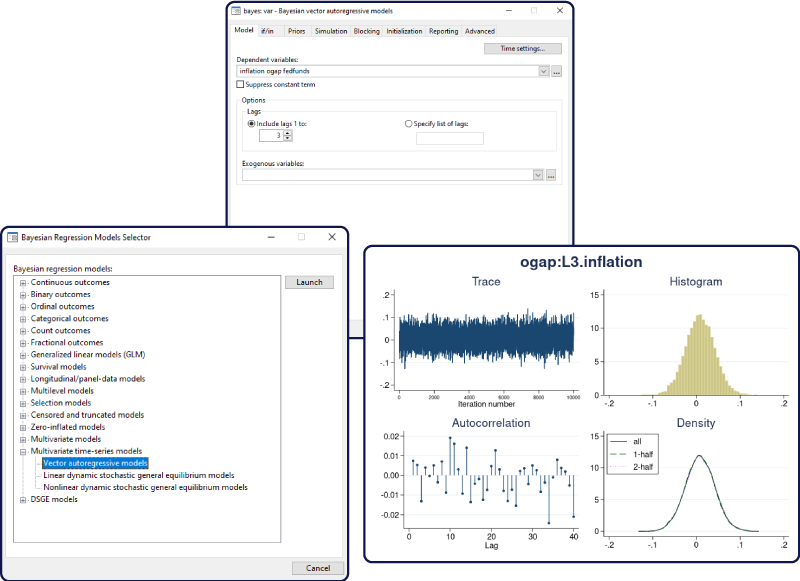
You fit your VAR models with var.
You fit your Bayesian regression models with bayes:.
Now fit your Bayesian VAR models with bayes: var.
Bayesian multilevel modeling
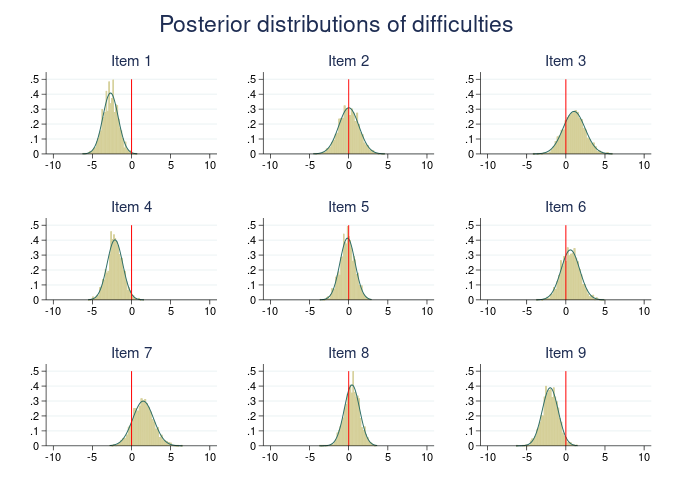
Nonlinear, joint, SEM-like, and more.
More multilevel models.
More powerful.
Easier to use.
Treatment-effects lasso estimation
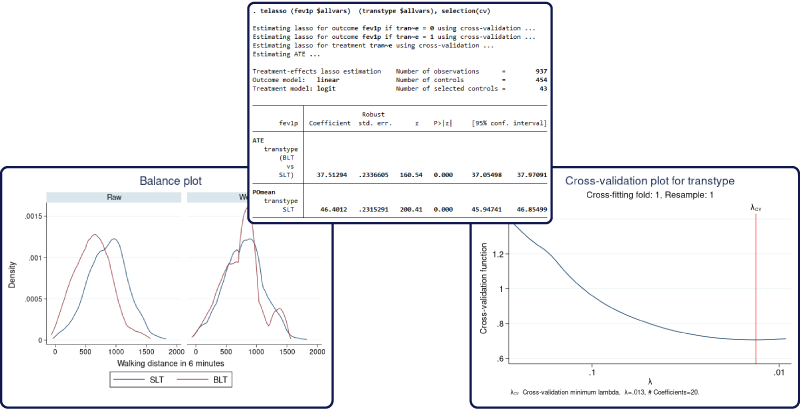
When you want:
Causal inference, average treatment effects, potential-outcome means, double-robust estimation
And you have:
Many (maybe hundreds or thousands of) potential covariates
Use treatment-effects estimation with lasso variable selection.
New functions for dates and times
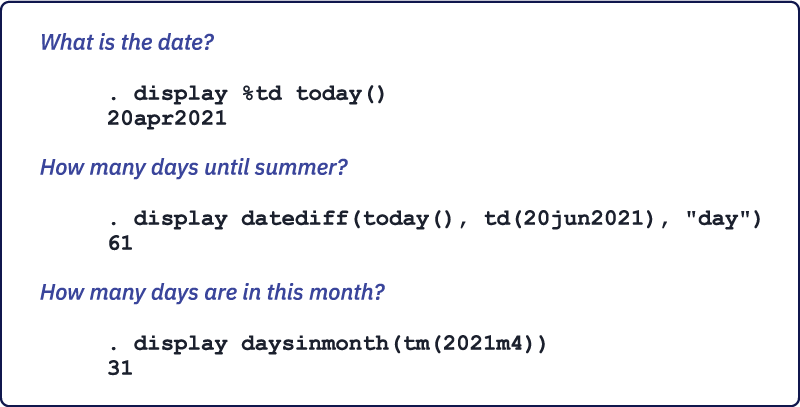
- Calculate durations, such as ages and other differences between datetimes.
- Calculate relative dates, or dates from other dates, such as the previous or next birthday or anniversary relative to a reference date.
- Extract individual components from datetime values and variables.
Leave-one-out meta-analysis
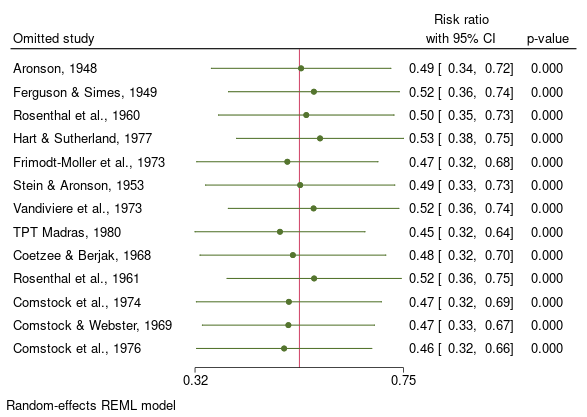
Are there influential studies in your data?
Use leave-one-out meta-analysis to find out.
Galbraith plots
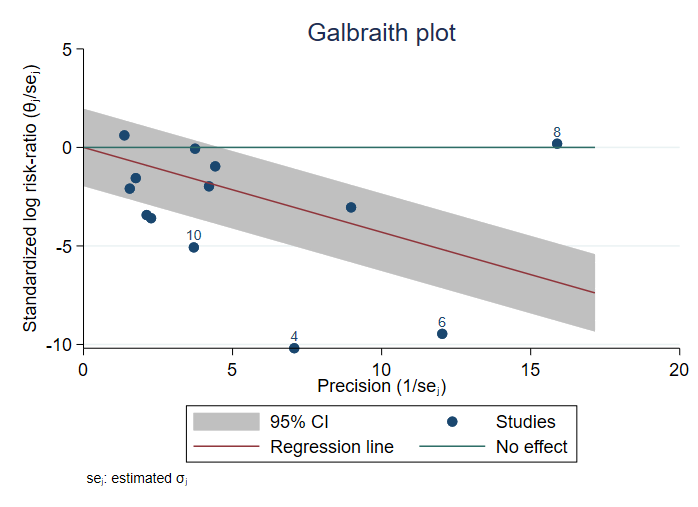
Graphically summarize meta-analysis results
- Study-specific effect sizes
- Precision of effect sizes
- Overall effect size
Detect potential outliers
Assess heterogeneity
Panel-data multinomial logit model
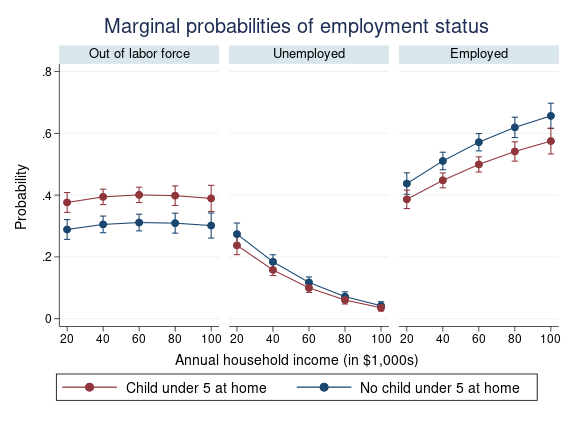
You can model categorical outcomes with mlogit.
You can model panel data with xt.
Now you can do both!
Stata’s new xtmlogit command models categorical outcomes that change over time.
Bayesian panel-data models
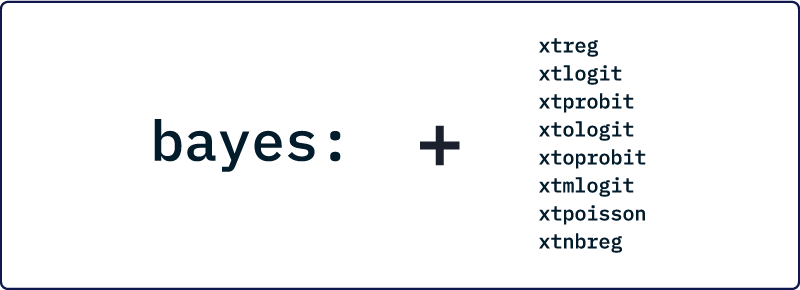
Bayesian analysis lets you answer probabilistic questions with panel-data models.
- How likely is it that an extra year of schooling will increase wages?
- What is the probability of default for a low-risk portfolio?
Incorporate prior knowledge, see posterior distributions of random effects, compute Bayesian predictions, and more.
Zero-inflated ordered logit model
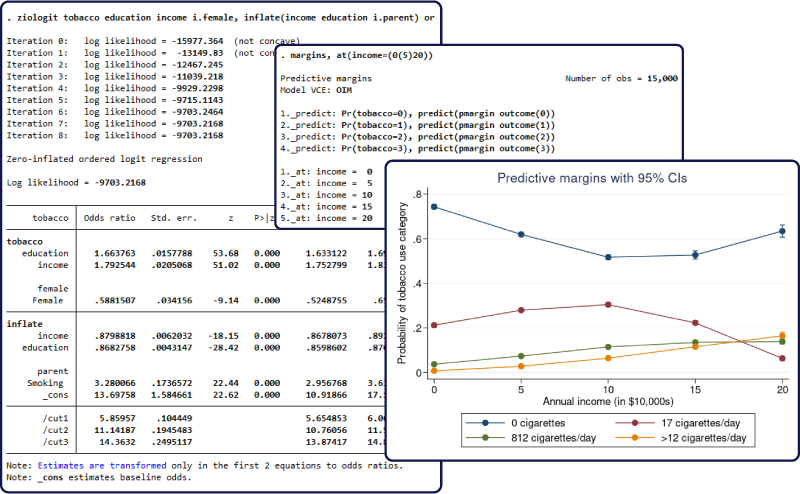
Need to model an ordinal outcome?
Have excess zeros (or responses in the lowest category)?
ziologit is the answer.
Nonparametric tests for trend
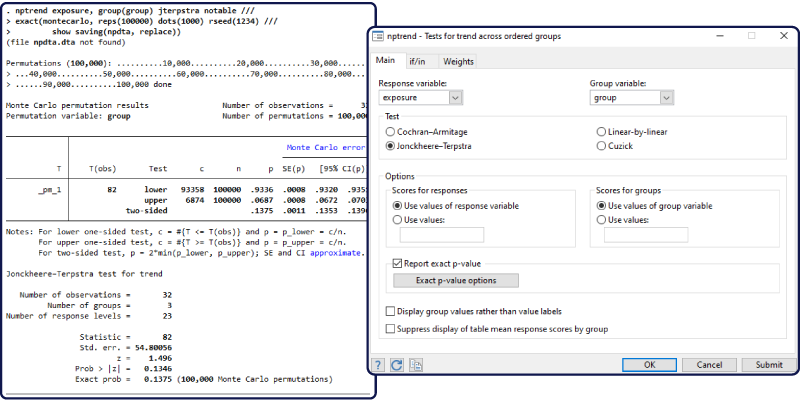
Do responses have an increasing or decreasing trend? Find out using one of four nonparametric tests for trend:
- Cochran–Armitage test
- Jonckheere–Terpstra test
- Linear-by-linear test
- Cuzick’s test with ranks
Bayesian IRF and FEVD analysis
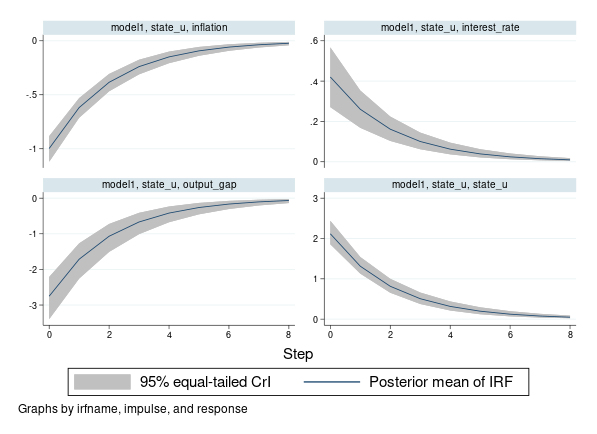
What is the effect of a shock over time?
What is the mean or median of the effect for a distribution of probable scenarios?
Bayesian IRF analysis answers these and more.
Bayesian dynamic forecasting
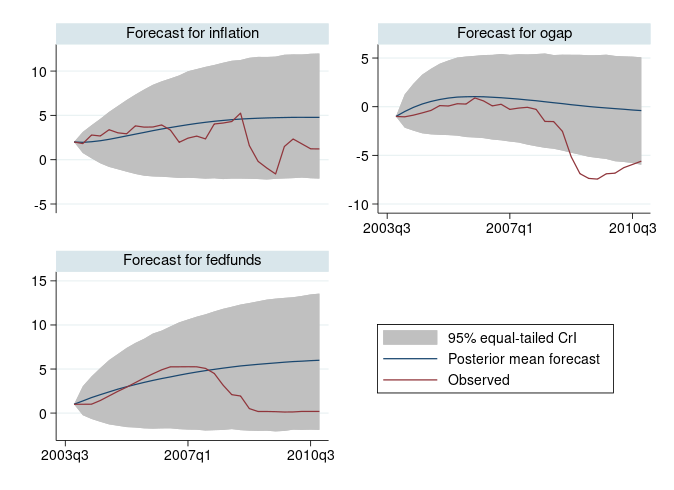
After VAR, you want a dynamic forecast.
After Bayesian estimation, you want statistics of posterior distributions.
Estimate both. Visualize both.
Lasso with clustered data
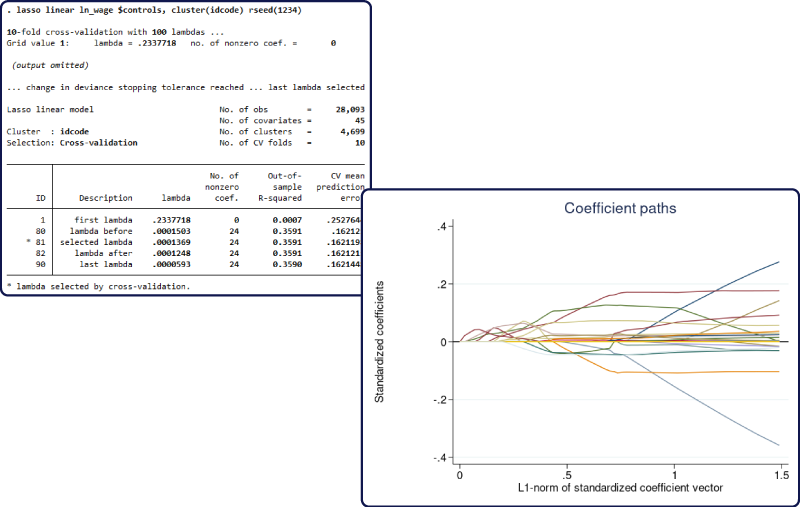
Your data have …
many variables.
Your data have …
clusters of observations.
Your lasso for prediction, model selection, or inference can now select variables while accounting for clustering.
BIC for lasso penalty selection
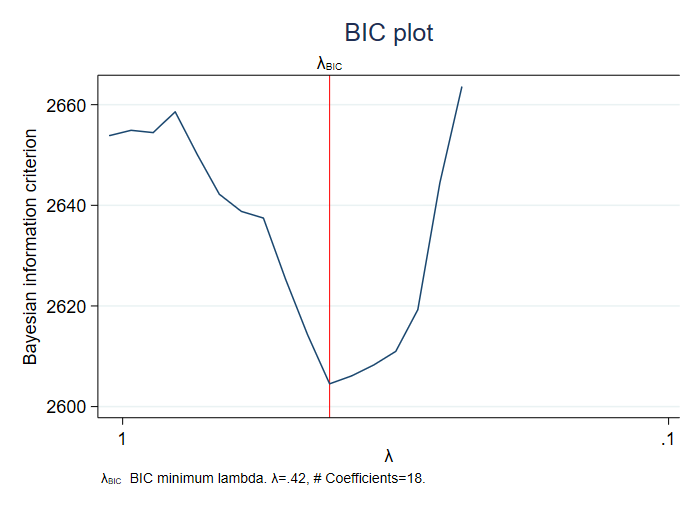
Which variables should lasso include?
BIC for lasso penalty selection can tell you.
Bayesian linear and nonlinear DSGE models
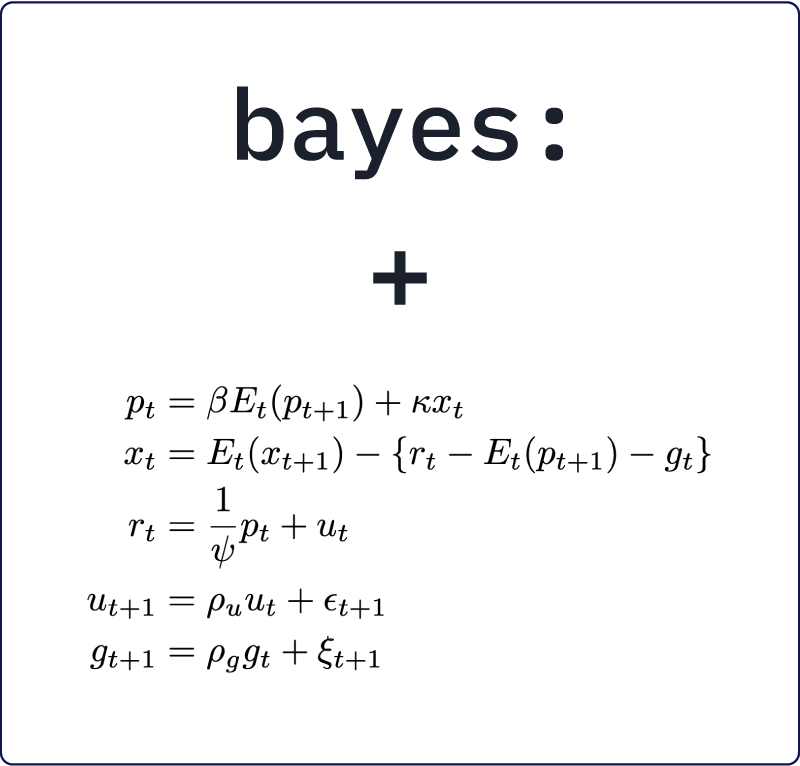
Forming rational expectations
of the future is hard.
DSGE models include
these expectations.
Prior information helps.
Do-file Editor enhancements
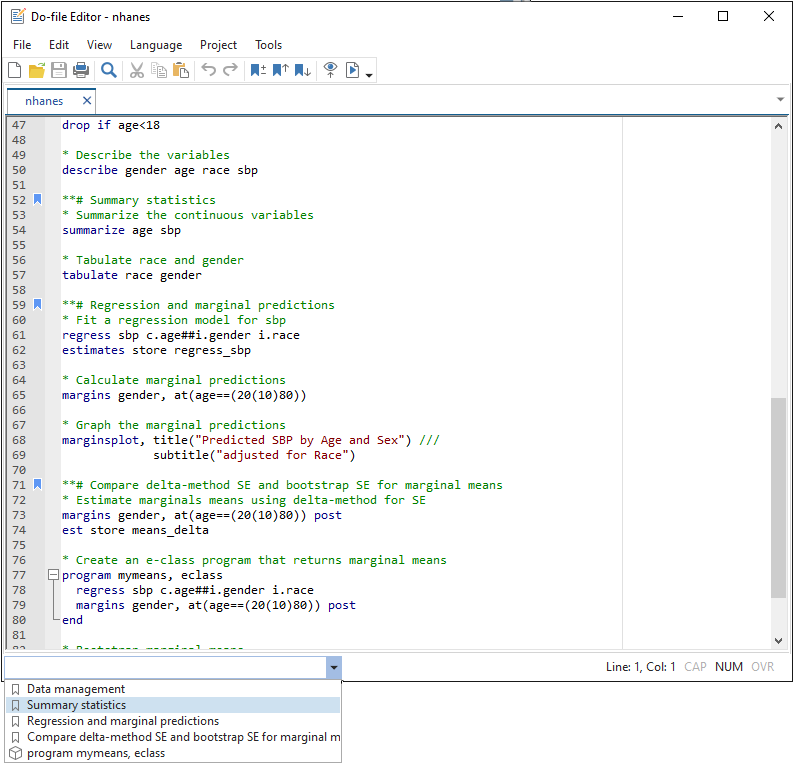
- Persistent bookmarks
- Navigation Control
- Syntax highlighting for Java, XML, and more
- Auto-completion for quotes, parentheses, and brackets
Stata on Apple Silicon
- Native M1 processor support
- Universal application for both Intel and Apple Silicon Macs
- One license, both kinds of hardware
Intel Math Kernel Library (MKL)
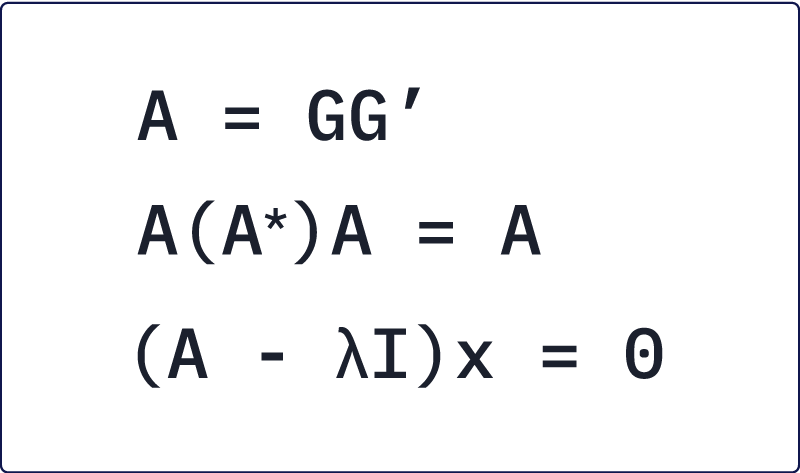
Mata functions and operators use heavily optimized LAPACK routines underpinned by the Intel Math Kernel Library.
Use your favorite Stata commands like always; underlying functions are faster, so you get results faster.
Java integration
- Use Java interactively (like JShell) from within Stata.
- Embed Java code in do-files.
- Embed Java code in ado-files.
- Compile and execute Java code “on the fly” without external programs.
H2O integration
- Start a new H2O cluster or connect to an existing one.
- Manipulate data on an H2O cluster.
- Access the capabilities of H2O directly in Stata.
JDBC
Connecting Stata to databases is now easier.
Want to access data from Oracle, MySQL, Amazon Redshift, Snowflake, Microsoft SQL Server, and others?
Use jdbc.
Want one driver that works on Windows, Mac, and Linux?
Use jdbc.
